Play about the Duke of Florence (BL Add MS 88878): Difference between revisions
| Line 56: | Line 56: | ||
==Possible Narrative and Dramatic Sources or Analogues== | ==Possible Narrative and Dramatic Sources or Analogues== | ||
The scene recorded in the manuscript presents the historical Duke of Florence, Alessandro de’ Medici (1510–1537), here called Prince Alexander, and his cousin Lorenzino de’ Medici (1514–1548), here Lorenzo. The manuscript depicts a scene in which Alexander, having received a letter from a political exile, Castruccio, accusing Lorenzo of treason, dismisses his courtiers before confronting Lorenzo himself. Alexander makes Lorenzo read the letter to find out whether there is any foundation for this severe allegation. Lorenzo jokes about the letter’s style but admits the allegations are true. He then reminds Alexander of his previous loyalty and claims he was acting as a double agent in order to infiltrate enemy circles. The real-life Alessandro de’ Medici was in fact murdered by Lorenzino, who subsequently claimed he had acted in the civic interest by assassinating a tyrant, so we can might assume that Prince Alexander was eventually to be assassinated. | |||
The most credible likely inspiration for Melbourne’s author is Paolo Giovio’s History of His Own Times (Latin edition 1550–52): a chronicle of the Italian Wars of 1494 to 1559. Although Carter points to Marguerite of Navarre’s Heptameron as a more likely source for Shirley’s equivalent play, Bawcutt discovered in the plots of both texts many more detailed similarities with Giovio’s History; specifically, the historical moment they dramatize is absent from Navarre’s version of the story, but present in Giovio’s. Smith (2017) accepted Bawcutt’s narrative as most persuasive in his 2017 edition of the Melbourne MS. | |||
==References to the Play== | ==References to the Play== | ||
Revision as of 04:27, 4 October 2019
Historical Records
BL Add MS 88878 (images)
This manuscript play fragment exists only as a single sheet of paper (2 folios / 4 pages) in length. The first page features a number at the top (2) and begins part-way through a scene, implying that the surviving sheet was at least conceived of as part of a series, whether or not the play was continued. (BL Add MS 88878):
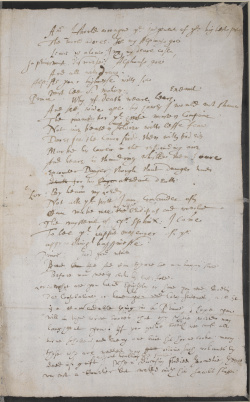
|
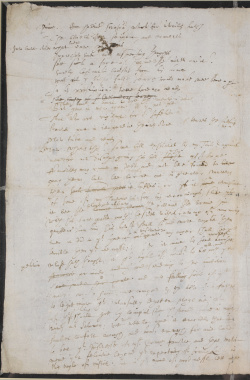
|
| BL Add MS 88878, fol.1r. | BL Add MS 88878, fol.1v. |
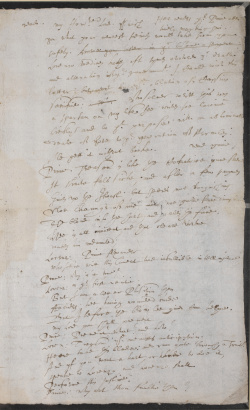
|
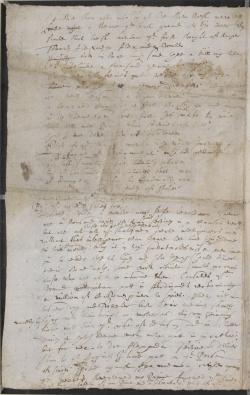
|
| BL Add MS 88878, fol.2r. | BL Add MS 88878, fol.2v. |
All images (c) British Library. Reproduced by permission.
NB. The above images have been cropped into pages to display the text in order. The following openings illustrate the sheet of paper itself:
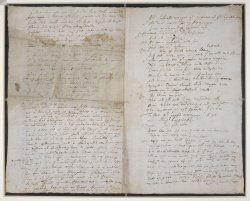
|
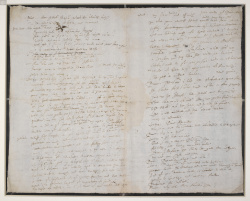
|
| BL Add MS 88878, fol.2v-1r. | BL Add MS 88878, fol.1v-2r. |
BL Add MS 88878 (transcription)
Theatrical Provenance
There is no recorded evidence of a performance of a play corresponding to this fragment of text. Nevertheless, it bears similarities to Act 2, Scene 1 of James Shirley’s play The Traitor, which was written in 1630, licensed for performance on May 4, 1631, and probably first performed by Queen Henrietta Maria’s company before being taken over by Beeston’s Boys (Bentley 1:226). Since the language of the manuscript ties it quite definitively to 1630–35, the precise period when The Traitor was written, performed, and published (Smith 2017), we must assume that the texts were at least contemporary with one another if not more closely connected. It is possible, but by no means definite, that the Melbourne Manuscript is a foul-paper (draft) version of The Traitor 2.1. The fragment was read through aloud by attendees of the Early Modern Interdisciplinary Seminar held at Clare College, Cambridge in November 2015, in advance of a research paper on the manuscript.
Probable Genre(s)
Tragedy, though the dramatic writing is interspersed with humour and bawdy jokes.
Possible Narrative and Dramatic Sources or Analogues
The scene recorded in the manuscript presents the historical Duke of Florence, Alessandro de’ Medici (1510–1537), here called Prince Alexander, and his cousin Lorenzino de’ Medici (1514–1548), here Lorenzo. The manuscript depicts a scene in which Alexander, having received a letter from a political exile, Castruccio, accusing Lorenzo of treason, dismisses his courtiers before confronting Lorenzo himself. Alexander makes Lorenzo read the letter to find out whether there is any foundation for this severe allegation. Lorenzo jokes about the letter’s style but admits the allegations are true. He then reminds Alexander of his previous loyalty and claims he was acting as a double agent in order to infiltrate enemy circles. The real-life Alessandro de’ Medici was in fact murdered by Lorenzino, who subsequently claimed he had acted in the civic interest by assassinating a tyrant, so we can might assume that Prince Alexander was eventually to be assassinated. The most credible likely inspiration for Melbourne’s author is Paolo Giovio’s History of His Own Times (Latin edition 1550–52): a chronicle of the Italian Wars of 1494 to 1559. Although Carter points to Marguerite of Navarre’s Heptameron as a more likely source for Shirley’s equivalent play, Bawcutt discovered in the plots of both texts many more detailed similarities with Giovio’s History; specifically, the historical moment they dramatize is absent from Navarre’s version of the story, but present in Giovio’s. Smith (2017) accepted Bawcutt’s narrative as most persuasive in his 2017 edition of the Melbourne MS.
References to the Play
<List any known or conjectured references to the lost play here.>
Critical Commentary
<Summarise any critical commentary that may have been published by scholars. Please maintain an objective tone!>
For What It's Worth
<Enter any miscellaneous points that may be relevant, but don't fit into the above categories. This is the best place for highly conjectural thoughts.>
Works Cited
<List all texts cited throughout the entry, except those staple texts whose full bibliographical details have been provided in the masterlist of Works Cited found on the sidebar menu. Use the coding below to format the list>
<If you haven't done so already, also add here any key words that will help categorise this play. Use the following format, repeating as necessary: >
Site created and maintained by your name, affiliation; updated DD Month YYYY.